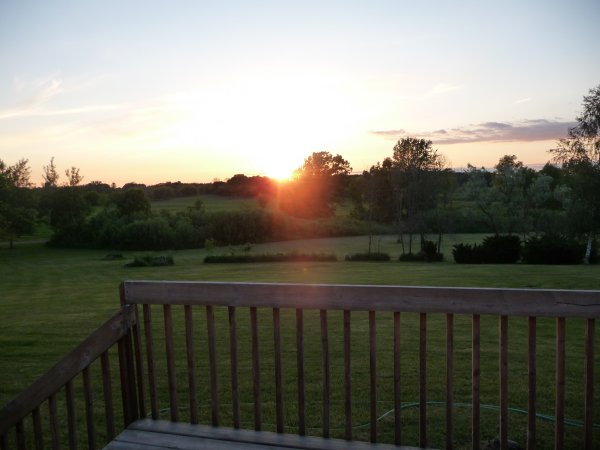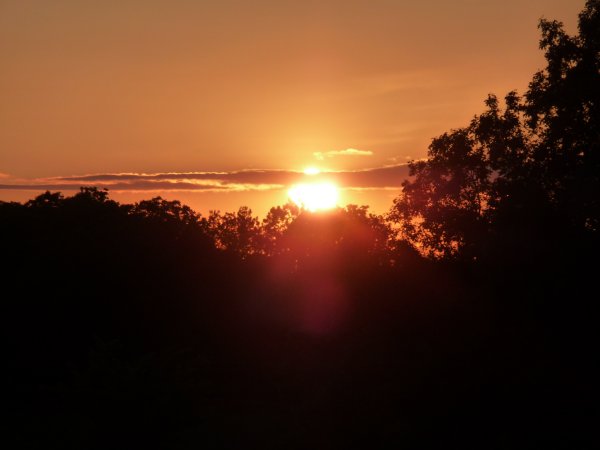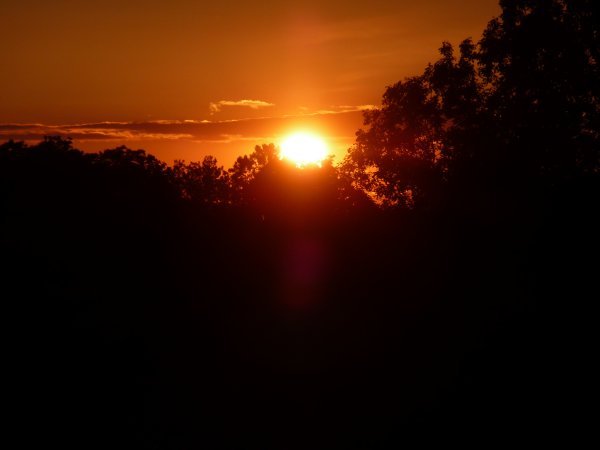If you are like most of us amateur photographers, you use the automatic settings on your camera. My first full-time job was as a TV cameraman. I enjoyed it, but when the opportunity came to move into engineering I went for that and the better pay check that it brought. In those days, I used manual settings on my still shots. (I didn’t really have a choice, but I would have chosen to set aperture and shutter manually if I’d had the choice.)
Today’s digital cameras are very sophisticated. Even the inexpensive models have sophisticated technology. The automatics work well in most situations. Sylvia and I use a generation-old Panasonic that has optics by Leica. Multiple modes allow us to adapt easily to existing conditions.
Still, it pays to be familiar with how your camera process a scene. Let me share an example. I’ve posted numerous sunset pictures on this blog over the last three and a half years. Some of them have been very dramatic. A large part of my success results from knowing what my camera will do. Yes, it will show me on the screen, but how do I get it there. (Don’t you love that instant feedback? You don’t have to wait weeks to finish a roll of 35 mm film and then wait for processing.)
Let’s start with a wide-angle shot of a typical sunset.
 It’s not very exciting, is it? No clouds or haze to pickup colors for the wide shot. Less than a minute later I took the next shot after zooming in on the sunset.
It’s not very exciting, is it? No clouds or haze to pickup colors for the wide shot. Less than a minute later I took the next shot after zooming in on the sunset.
 Whoa! Where did all that color come from. And that cloud . . . It doesn’t even show up in the wide shot. Pretty good, right? Wait two minutes. That’s all just two minutes and re-frame the picture slightly.
Whoa! Where did all that color come from. And that cloud . . . It doesn’t even show up in the wide shot. Pretty good, right? Wait two minutes. That’s all just two minutes and re-frame the picture slightly.
 Just including less sky, made it appear darker. The sun position in two minutes shifted enough to increase interest. See how it seems to sit in a “socket” formed by the trees?
Just including less sky, made it appear darker. The sun position in two minutes shifted enough to increase interest. See how it seems to sit in a “socket” formed by the trees?
Bottom line: Patience and familiarity with your camera pays big dividends. Shoot lots of shots. Examine them closely and learn. Please deleted second rate shots. As a good friend once told me, “The main difference between a professional and an amateur is that the professional destroys his second-rate work.”
The three shots above are all as they came from the camera. I did resize them for faster download. I made no other alteration to these images.

Why would you save blurry and not-so-good photos? I don’t. We can’t use them for posts or anything else, so I’m quick with the delete button. Also, duplicate shots–I think we have a tendency to take too many photos of the same shot, hoping one will be good.
LOVE your sunset shots!